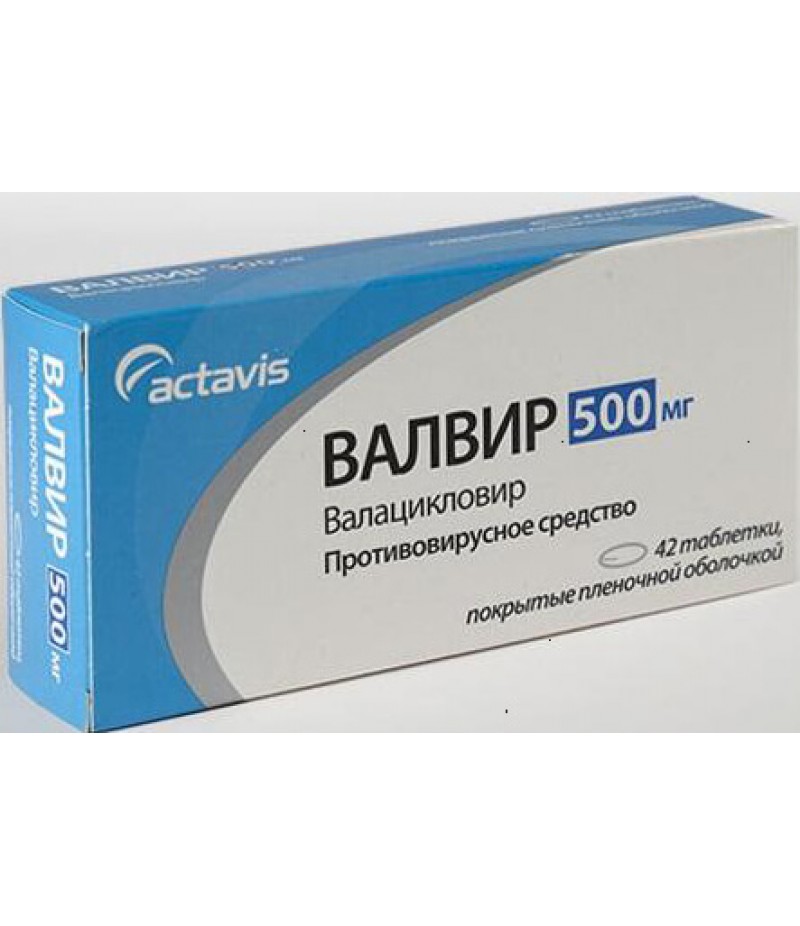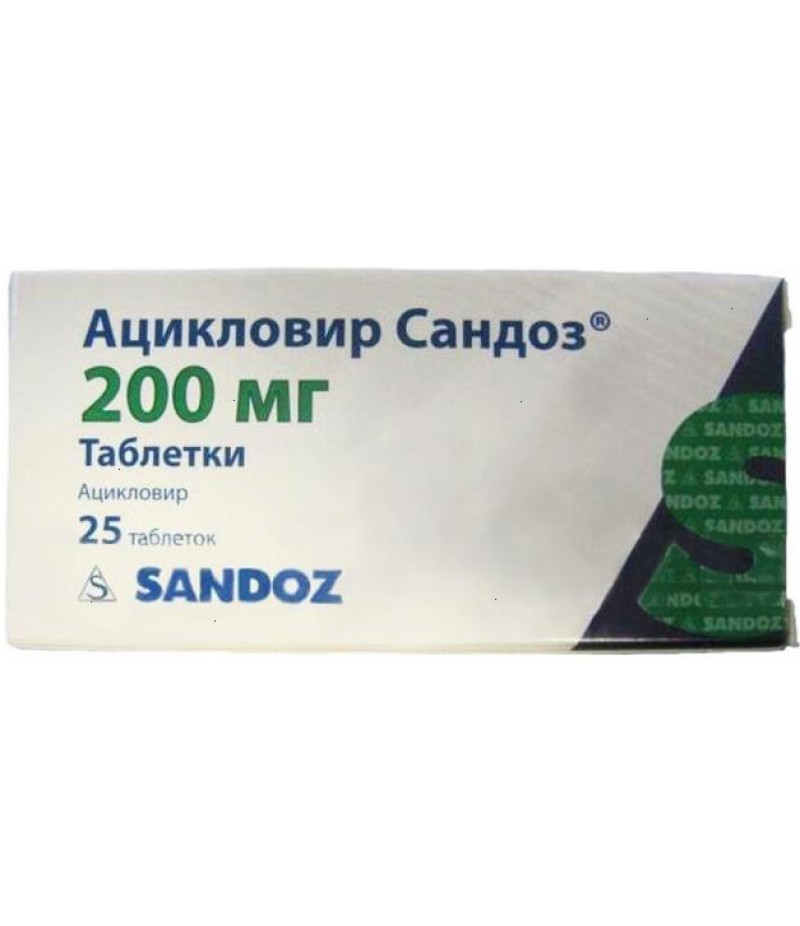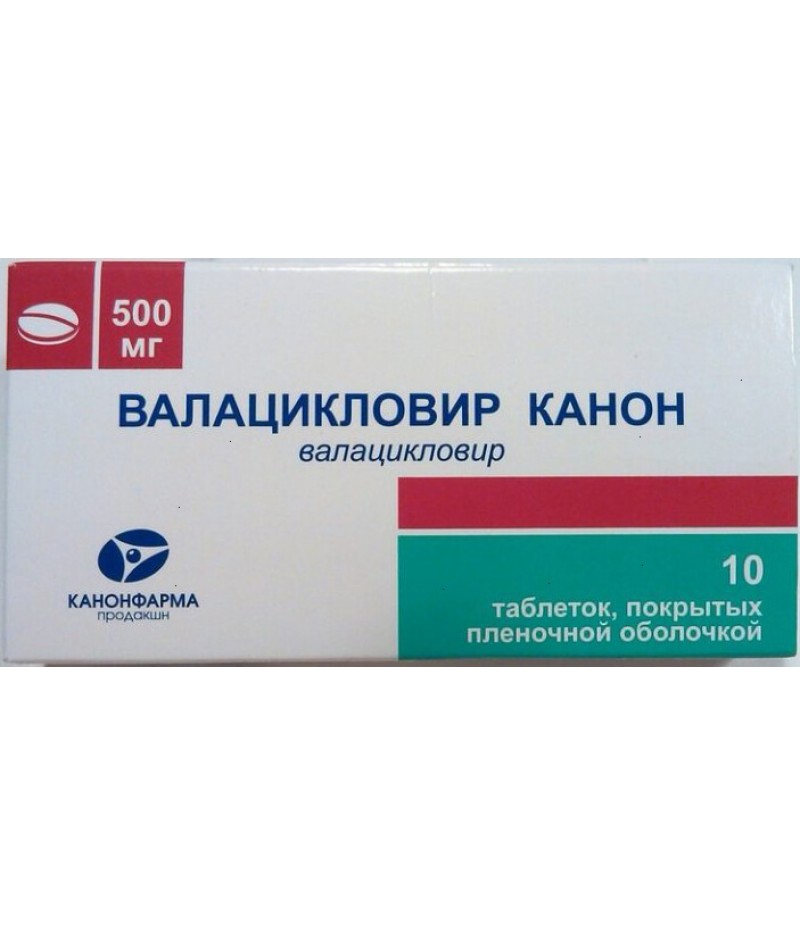Valvir tabs 500mg #42
- $74.52
- 2 or more $73.96
- 3 or more $73.50
- Availability:In Stock
Instruction for ValvirReed more and buy Valvir tablets hereForm of issue and compositionThe preparation Valvir is produced in the form of tablets. Each tablet has an oval, biconvex form and is covered
Tags: tabs
Instruction for Valvir
Reed more and buy Valvir tablets here
Form of issue and composition
The preparation Valvir is produced in the form of tablets. Each tablet has an oval, biconvex form and is covered with a film membrane. The color of the tablet is white. If the tablet has 500 mg of active substance, then on the one hand it is labeled VC2, if the concentration is 1000 mg, then VC3 is marked on one side.
The main active substance is valaciclovir hydrochloride hydrate in the amount of 611.70 mg or 1223.40 mg - this corresponds to 500 mg and 1000 mg of valaciclovir.
As auxiliary substances, povidone K30, microcrystalline cellulose, magnesium stearate are used.
pharmachologic effect
Getting into the human body, valaciclovir is converted into acyclovir and L-valine.
Aciclovir displays its activity against viruses, destroying their DNA.
Patients with severe immunity disorders (receiving chemotherapy, HIV-infected, patients with bone marrow transplant), viruses have a decreased sensitivity to valaciclovir.
Pharmacokinetics
Valacyclovir is rapidly absorbed from the digestive tract.
Aciclovir, formed after the ingress of valaciclovir in the body, is distributed in the lungs, muscles, liver and kidneys. Also, it enters the cerebrospinal fluid, the secret of the vagina and the liquid of herpetic vesicles.
Valaciclovir is excreted in the urine.
Indications for use
therapy of labile herpes;
herpes zoster therapy;
prevention and therapy of recurrences of infections of the mucous membranes and skin that are caused by the herpes simplex virus;
shows an effect in the prevention of cytomegalovirus infection, which occurs when organ transplantation;
reduces the infection of a healthy partner with genital herpes.
Contraindications
The drug is not recommended for use in kidney and bone marrow transplantation; with severe HIV infection; if there is an individual intolerance to the components of the drug; children under 12 years.
Dosage regimen and method of administration
The drug is intended for oral administration, prescribed only to adults with the following diseases:
Herpes zoster - course of treatment 7 days to 1 gr. 3 times a day.
Herpes simplex - 0.5 gr. each. 2 times a day. Relapses require a course of treatment in 3-5 days. If the therapy is performed for the first time, then the duration of the drug should be up to 10 days.
Labial herpes - therapy should be carried out according to the following scheme: 1 day - 2 g 2 times, the next dose is taken after 12 hours.
prevention of recurrence of infections that are caused by the herpes simplex virus - with the saved immunity prescribed 0.5 g once a day; at frequent relapses (10 times a year and more) appoint 0.25 g 2 times a day; at an immunodeficiency appoint or nominate on 0,5 g 2 times a day. Duration of treatment is from 4 to 12 months.
prevention of infection of a healthy partner with genital herpes - if a heterosexual adult with preserved immunity and a number of exacerbations is infected 9 times a year, then appoint 0.5 g once a day for a year. With regular sexual life, the drug should be taken every day. If the sexual contacts are irregular, then take Valvir should be 3 days before the alleged sexual contact.
Prevention of cytomegalovirus infection - adolescents from 12 years and adults are prescribed 2 g 4 times a day (treatment should be started immediately after transplantation). Duration of treatment 90 days. In patients at high risk, therapy may be longer.
The determination of the dose of the drug also depends on the creatinine clearance (CC). Patients who undergo hemodialysis, should begin taking the drug as early as possible after the procedure.
If the patient has moderate or poorly expressed cirrhosis of the liver while maintaining the synthetic function, dosage adjustment of the drug is not required. There is no need to adjust the dose and with severe cirrhosis of the liver. But it should be borne in mind that the experience with this pathology is limited.
In the elderly, dose adjustment is not required. An exception is a significant impairment of kidney function.
Overdose
Data on overdose of valacyclovir is currently insufficient.
When consuming drugs at doses exceeding the therapeutic rate, the following symptoms of overdose may appear:
if a single dose is above the norm to 20 g, then the drug does not have a toxic effect;
if the super-high dose is taken for several days, then there is a headache, nausea, vomiting, confusion.
In case of an overdose, symptomatic treatment should be performed.
Drug Interactions
During clinical trials, there was no significant interaction.
Pregnancy and lactemia
The experience of using the drug during pregnancy is not enough. The use of valaciclovir is recommended only if the therapeutic effect for the mother is higher than the possible risk to the fetus.
The Valvir Metabolite - acyclovir - is excreted in breast milk. Breastfeeding is allowed only when the effect of treatment for the mother is significantly higher than the estimated risk for the child.
Side effects
The most common adverse reactions are nausea and headache. Serious side effects include neurologic disorders, acute renal failure, thrombocytopenic purpura, uremic syndrome.
From the side of the lymphatic system and blood: thrombocytopenia and leukopenia.
From the digestive system: discomfort or abdominal pain, nausea, vomiting, diarrhea.
On the part of the psyche and the nervous system: aggressive behavior, confusion, dizziness, decreased intellectual abilities, hallucinations. Very rarely possible tremor, agitation, dysarthria, ataxia, depression, mania, coma, encephalopathy, convulsions. These symptoms are reversible and occur in patients with kidney disease.
From the immune system: anaphylaxis.
From the subcutaneous tissue and skin: itching, rashes.
From the respiratory system: dyspnoea.
On the part of the urinary system: a violation of kidney function, renal colic, acute renal failure.
Allergic reactions: angioedema, hives.
Also, visual impairment, a decrease in hemoglobin, anemia, increased blood pressure, facial edema, respiratory tract infections, fatigue, and tachycardia are also possible.
special instructions
When there is side effects from the side of the central nervous system (delirium, hallucinations, convulsions), it is necessary to cancel the drug.
In the presence of kidney failure, the risk of neurological complications increases.
Correction of the dose of the drug can not be performed with moderate or weak liver cirrhosis and other violations of the liver function. Also, dose adjustment for elderly patients is not required. Exceptions are elderly patients who have a significant impairment of kidney function.
The experience of clinical use of valaciclovir in pediatrics is not.
If side effects of drugs associated with psychomotor reactions are manifested, then you need to be careful when driving and managing machinery.
Terms and conditions of storage
The preparation Valvir should be stored in a place inaccessible to children, with a temperature regime of 25 ° C. The storage time is 2 years from the date of release.





